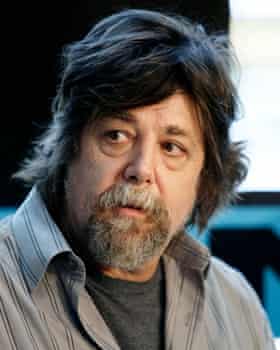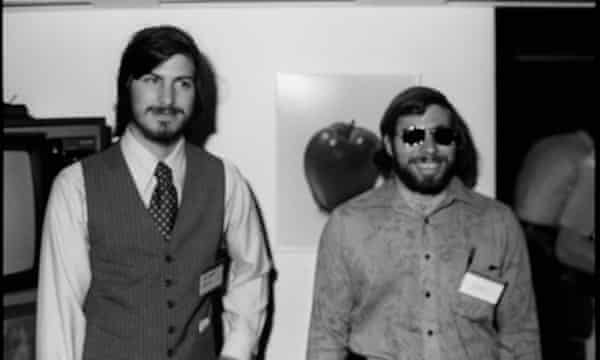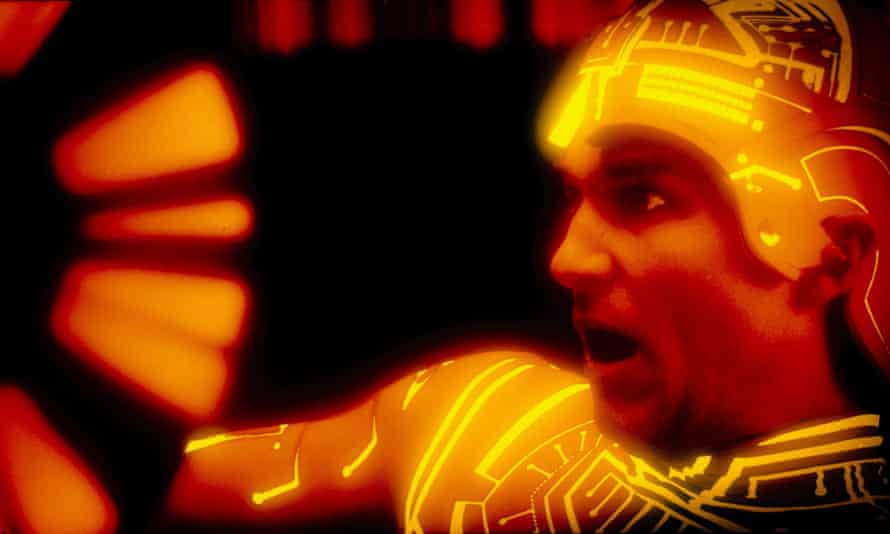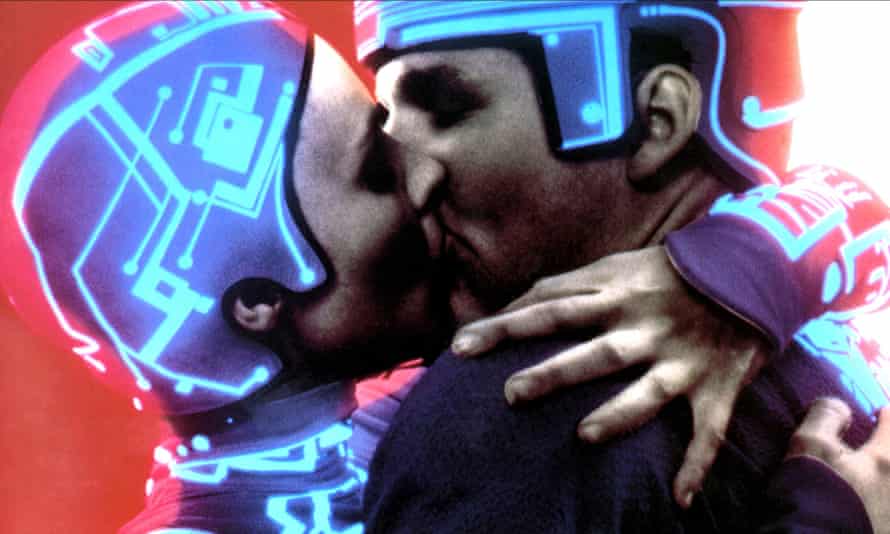[ad_1]
Back in 1982, computers meant one of two things in the popular imagination. Either they were room-sized machines used by the military-industrial complex to crunch data on stuff like nuclear wars and stock markets, or they were fridge-sized arcade games such as Space Invaders and Pac-Man. Kraftwerk were singing about home computers, but if you owned one at all, it was probably a Sinclair ZX81, which was only marginally more sophisticated than a calculator.
And yet, that summer, cinemagoers were catapulted into the digital future. Few appreciated it at the time but with 40 years’ hindsight, Steven Lisberger’s sci-fi adventure Tron was the shape of things to come: in cinema, in real life, and in virtual life. As a piece of entertainment, it is admittedly no classic, but thematically, Tron anticipates issues we are still grappling with today: artificial intelligence, digital identity, privacy, personal data, the dominance of big tech. Tron was also the first attempt to visualise the digital realm itself – what was then called “cyberspace” but might now be termed “the metaverse”. Tron’s cyber-world looks quaintly low-res by today’s standards – a minimalist, angular, black-and-neon environment resembling a 1980s nightclub – but its distinctive retro chic is still much cherished and mimicked.
Tron also anticipated the digital future of film-making. It was the first movie to incorporate lengthy sequences of entirely computer-generated imagery (CGI) – a then-unprecedented 15 minutes’ worth. Nobody had seen anything like it. As such, Tron paved the way for the current era of digitally enhanced spectacle, influencing film-makers such as James Cameron, George Lucas, Peter Jackson, Tim Burton, the Wachowskis (The Matrix bears many similarities to Tron) and former Pixar chief John Lasseter, who once said: “Without Tron there would be no Toy Story.”
And yet, ironically, most of Tron’s futuristic setting was laboriously hand-crafted, using old-school techniques no present film-maker could replicate. “We were the bridge from analogue to digital, and that is a unique thing,” says Lisberger. Now in his 70s, the director likens making Tron to pushing a crude aeroplane over a cliff then working out how to make it fly on the way down. “It was unlike any other movie that had been made, and no movie will ever be made like this again.”

Tron emerged in the culture at the precise moment when computing power was being liberated from its military-industrial strongholds and put into the hands of the people, and that is also the story in the film. The plot concerns a genius programmer named Flynn (played by Jeff Bridges), who we find running a video game arcade since his former employers, a tech corporation named Encom, stole his code. While trying to hack into Encom, Flynn is somehow digitised by its all-knowing AI, the Master Control Program (MCP), and zapped into its 80s nightclub cyber-world, where he must overthrow the MCP (via video game combat), retrieve his intellectual property and return to reality.
The timing is almost uncanny. In late 1979, while developing Tron, Lisberger and his co-writer Bonnie MacBird visited the Palo Alto Research Centre (Parc). This was a blue-sky research institute funded by Xerox, which would come to be revered as the birthplace of modern computing. Its innovations included the “graphical user interface” (GUI), a simplified form of human-computer interaction via desktop icons and the point-and-click mouse. Lisberger and MacBird met with computer scientist Alan Kay, one of PARC’s brightest sparks. Kay became the basis for the character of Flynn’s buddy Alan/Tron, and is credited as a consultant. The year after Tron’s release, Kay and MacBird married.
That same month in 1979, Xerox Parc had another significant visitor: Steve Jobs. The 24-year-old Apple boss immediately saw the potential of Xerox’s GUI. “I thought it was the best thing I’d ever seen in my life,” Jobs later recalled. “Within, you know, 10 minutes, it was obvious to me that all computers would work like this some day.” Xerox was making so much money from photocopiers, it barely cared what its Parc researchers were doing. Jobs swiftly made moves to exploit the GUI technology, including recruiting many of Parc’s key employees. Bill Gates’s Microsoft, which was then Apple’s first software licensee, did something similar. Xerox’s oversight is regarded as one of the biggest blunders in corporate history.

Some have even speculated that Tron’s Flynn, the whizzkid visionary, is a coded version of Jobs, with Alan, the nerdier programmer, as Bill Gates. Lisberger sees Tron’s hero more as a shaman travelling into the spirit world to retrieve knowledge and resolve conflict. He is no stranger to psychedelic mysticism. “It would be kind of hypocritical to be an artist in the 70s and not explore that domain to a certain degree,” he says, “but I guess what was really happening, if one steps back, is that I was telling my own story. In that I was about to create a world using these tools, and in a way found myself lost in that world. A Wizard of Oz kind of journey.”
Lisberger did not own a computer when he began thinking about Tron. Having grown up on the east coast, he moved his successful animation company to Los Angeles in 1978 to work on a feature for NBC for the 1980 Moscow Olympics (it was never broadcast because of the US boycott). After seeing early video games such as Pong, Lisberger became interested in computer graphics. He met pioneers including Ed Catmull, the future co-founder of Pixar, who was at the New York Institute of Technology, and Phil Mittelman at MIT, whose company MAGI was making 3D tank simulations for the US military. Mittelman showed Lisberger a virtual artist’s mannequin he’d created. “Frankly, it blew my mind,” Lisberger recalls. “This was, like, the magic realms of wizards. As an artist, I thought: ‘We should be dabbling in this stuff.’”
Lisberger was also thinking about computing power being in the hands of the state, collecting citizens’ personal data: tax records, driving licences, and so on. “I’m already in your system. So why is it I don’t have access to myself?” As such, Tron embodies the utopian dream of the early computing era. “It was a story of rebellion and revolution, and founding a new frontier that would enable a new civilisation to take hold.”
Lisberger still had no idea how he was going to make such a movie. “Quite a few established film people thought I was nuts, but I didn’t know enough about how Hollywood works to know that I was attempting the impossible.” At one stage, he met with Marvel Comics supremo Stan Lee, and showed him a small sample of computer animation. “He looked at me like: ‘OK kid, good luck with all that.’ He was not in the least interested.”

The only company with the will and the resources to realise Tron was Disney. It was looking for something fresh. Since Walt’s death in 1966, the studio had been in decline, overtaken by movie hits such as Star Wars. “It was like the castle in Sleeping Beauty,” says Lisberger. “Here was this amazing place, and they were insular and not really connected to Hollywood. It was a sleeping giant waiting to be woken up.” Technically, Tron is a mix of live action, old-school animation and CGI. All three elements were challenging. All the special effects were added in post-production, so the actors were performing on blank, entirely black sets. Bridges embraced the “far-out” premise, says Lisberger. David Warner, who plays Flynn’s main antagonist Ed Dillinger, saw it as no different to the British stage. Tron’s distinctive glowing circuitry was achieved through a technique called backlight animation, which involves making a negative of each frame and hand-painting the glowing areas. There were 75,000 frames to do; more than half a million pieces of artwork. Nobody knew how it would come together until the last minute, and reshoots were virtually impossible.
Tron’s CGI elements were an entirely separate process. Computer graphics had been used in movies before Tron, but only in brief snippets. In 1973’s Westworld there is a clip of a robot’s-eye pixellated view, for example. Star Wars and Alien both feature 3D wireframe graphics projected on screens. Only a few companies could produce such images, each of which had their own room-sized computer and their own custom-built software. The process was still cumbersome. “We had to figure out how to position and render objects 24 times to make one second of perceived movement on the screen,” says Bill Kroyer, Tron’s head of computer animation. Tron’s animators had to map out the CGI scenes on graph paper, then calculate the coordinates and angles for each element in each frame. Computer engineers would then input all the numbers manually. And there was no way of seeing the results until the images were printed on to 35mm film and projected in the theatre.
Tron’s offices were trailers in the Disney parking lot, recalls Chris Wedge, then an animator for MAGI, who worked on Tron’s light cycle sequences. “[That’s] because the Disney animation department didn’t believe that this was animation,” he says. “They thought it was computers just making effects. They just didn’t understand anything about it.” Some younger Disney animators did cotton on, though – such as Kroyer’s ex-roommate Lasseter. “As much as he could get away from his paying job, he would come in and sit behind me and watch me working on Tron stuff, for hours,” says Kroyer. “He just became really fascinated by it.”
Ahead of its release in July 1982, Tron had been hyped to the rafters but it was not a huge hit. It finished as the 26th highest-grossing film of a year that was topped by ET and Raiders of the Lost Ark. The spin-off Tron video game actually made more money than the movie. The film was even disqualified from the best special effects Oscar, since using computers was considered “cheating”. Lisberger continued to work as a director for hire on non-computer movies. He had a hand in the long-awaited sequel, 2010’s Tron: Legacy, and the animated series. A third movie is reportedly in the works, and a Tron rollercoaster is nearing completion at Disney World. None of the CGI companies that worked on Tron survive today. Everyone could see the potential of CGI, but the processing power and ease of use wasn’t there yet.
“We thought this would start a revolution, but unfortunately it didn’t,” says Wedge. Lasseter immediately tried to get a computer-animated movie off the ground at Disney, first an adaptation of Where the Wild Things Are, then The Brave Little Toaster but Disney ultimately fired him. So Lasseter went to work for George Lucas, who was building his own computer graphics lab. He had already hired Ed Catmull and his NYIT colleagues.
Meanwhile, in January 1983, Apple launched the Lisa, one of the first personal computers to use a GUI. The following year came its vastly more successful Macintosh. In November 1983, Bill Gates unveiled his own GUI, named Windows, along with the first version of Microsoft Word. The personal computing revolution was finally beginning.

Soon the story came full circle. Jobs bought Lucasfilm’s computer graphics arm in 1986 for $10m. It became Pixar Animation Studios. Nine years later, Lasseter directed Toy Story, and the computer-animated movie was born. Then, in 2006, Disney bought Pixar from Apple. And LucasFilm from Lucas, in 2012. Once again, computing power is in the hands of a small number of powerful corporations. Tron’s dream of digital liberation turned out to be short-lived.
Good things came out of the computing revolution, Lisberger acknowledges, but in retrospect, his techno-utopianism proved somewhat misplaced.
“Tron is so idealistic: ‘If we just get the tools into the hands of people, then democracy is assured for all time,’” he says. “The irony is that the computer has been used to just damn-near overthrow democracy! If someone had said: ‘If we put these tools into the hands of the public, it’s going to result in endless conspiracy theories, misinformation, lack of civility, endless rivers of porn, and the most violent video games you could ever imagine,’ we would have said: ‘Oh, no way. It’s going to be wonderful!’ It turns out we can predict the tools of the future but we can’t really predict the philosophies or the ethics of the future.”
[ad_2]
Source link



